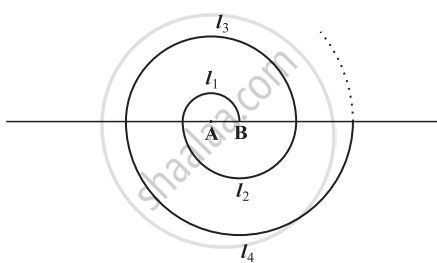Advertisements
Advertisements
प्रश्न
Find the sum of the first 15 terms of each of the following sequences having the nth term as
`a_n = 3 + 4n`
उत्तर
Here, we are given an A.P. whose nth term is given by the following expression `a_n = 3 + 4n`. We need to find the sum of first 15 terms.
So, here we can find the sum of the n terms of the given A.P., using the formula,
`S_n = (n/2)(a + l)`
Where a = the first term
l = the last term
So, for the given A.P,
The first term (a) will be calculated using n = 1 in the given equation for nth term of A.P.
a= 3 + 4(1)
= 3 + 4
= 7
Now, the last term (l) or the nth term is given
`l = a_n = 3 +4n`
So, on substituting the values in the formula for the sum of n terms of an A.P., we get,
`S_15 = (15/2) [(7) + 3 + 4 (15)]`
`= (15/2)[10 + 60]`
= (15/2)(70)
`= (15)(35)`
= 525
Therefore, the sum of the 15 terms of the given A.P. is `S_15 = 525`
APPEARS IN
संबंधित प्रश्न
Find the sum of the following APs.
0.6, 1.7, 2.8, …….., to 100 terms.
Find the sum given below:
34 + 32 + 30 + ... + 10
A spiral is made up of successive semicircles, with centres alternately at A and B, starting with centre at A of radii 0.5, 1.0 cm, 1.5 cm, 2.0 cm, .... as shown in figure. What is the total length of such a spiral made up of thirteen consecutive semicircles? (Take `pi = 22/7`)

[Hint: Length of successive semicircles is l1, l2, l3, l4, ... with centres at A, B, A, B, ... respectively.]
Find the 6th term form the end of the AP 17, 14, 11, ……, (-40).
If Sn denotes the sum of first n terms of an A.P., prove that S12 = 3(S8 − S4).
The common difference of an A.P., the sum of whose n terms is Sn, is
The sum of n terms of two A.P.'s are in the ratio 5n + 9 : 9n + 6. Then, the ratio of their 18th term is
The first three terms of an A.P. respectively are 3y − 1, 3y + 5 and 5y + 1. Then, y equals
Which term of the AP 3, 15, 27, 39, ...... will be 120 more than its 21st term?
The sum of the first 15 multiples of 8 is ______.
